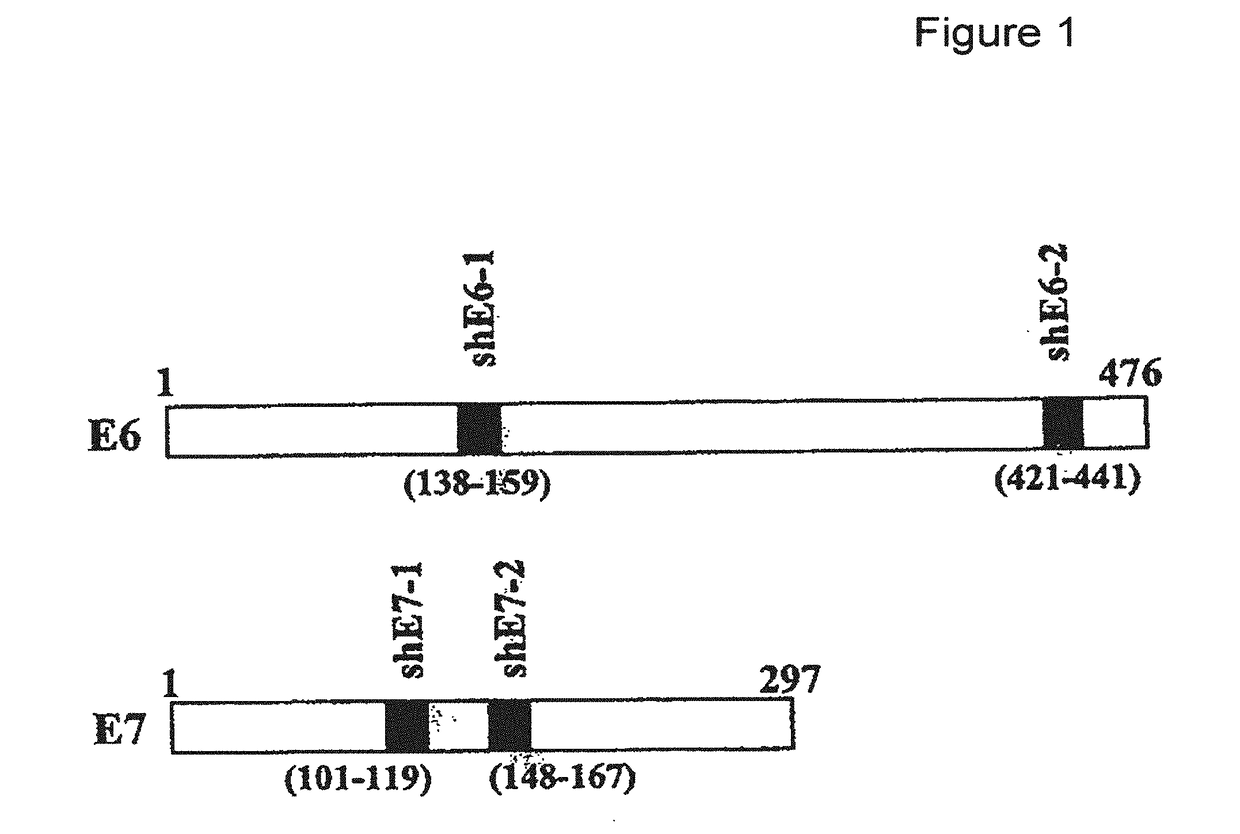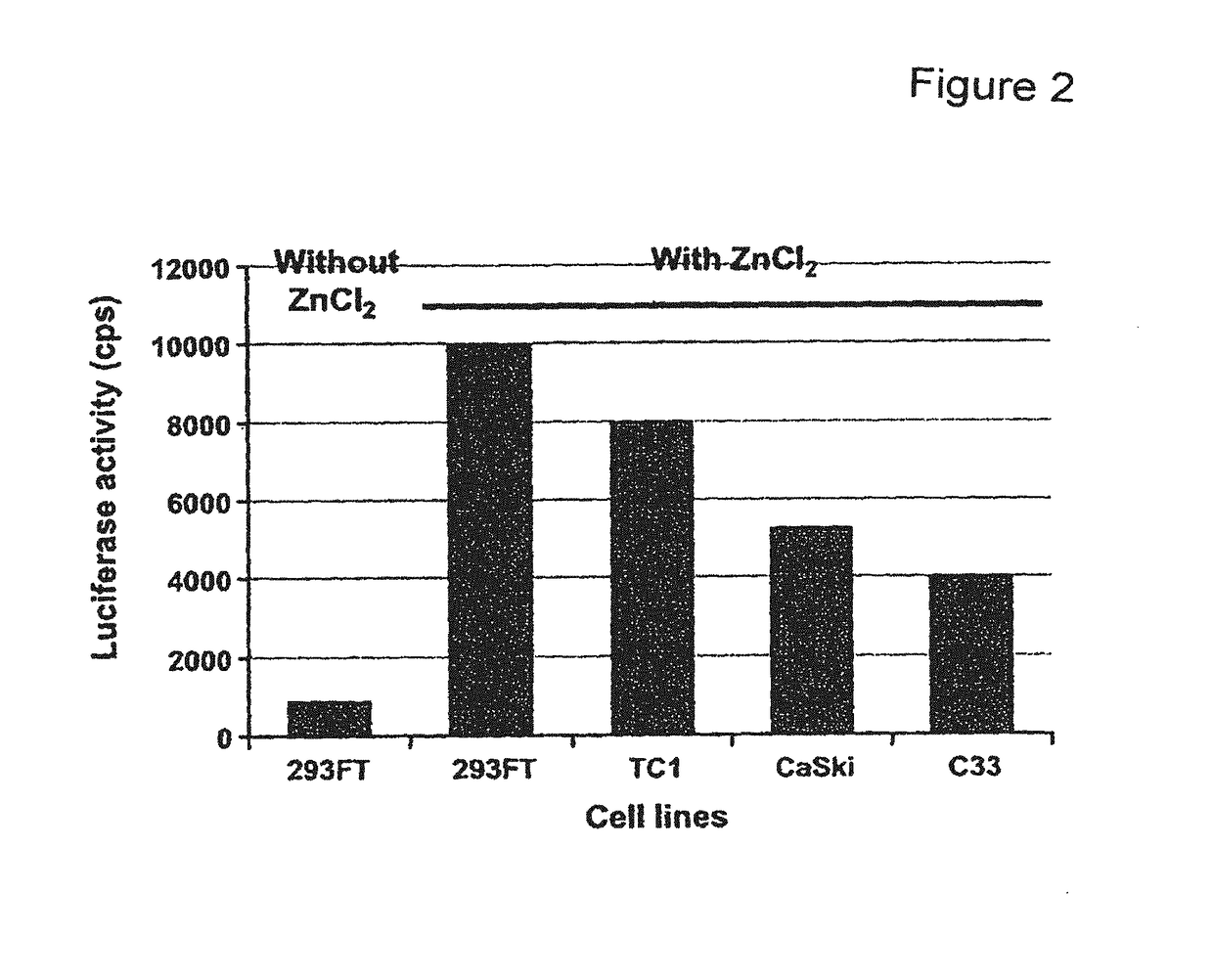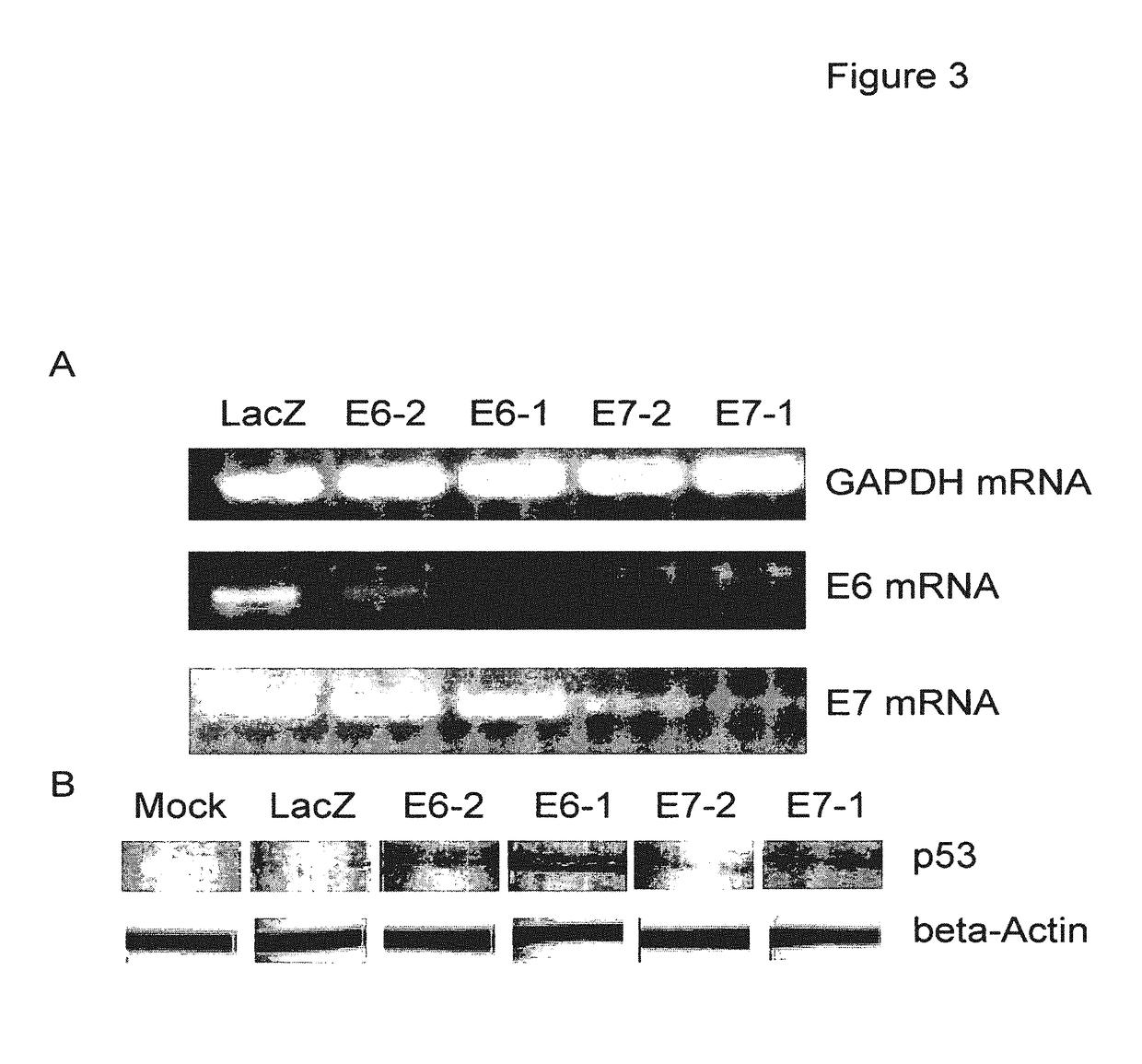HPV particles and uses thereof
a technology of human papillomavirus and particles, applied in the field of human papillomavirus like particles, can solve the problems of increasing the cost of treatment, loss of cervical integrity, inability to become pregnant, etc., and achieves the effects of increasing the chance, high chance, and high effectiveness in the prevention of cervical cancer
- Summary
- Abstract
- Description
- Claims
- Application Information
AI Technical Summary
Benefits of technology
Problems solved by technology
Method used
Image
Examples
example 1
Inhibition of Cervical Cancer Cell Growth by HPV-VLPs Packaged with HPV Oncoprotein shRNAs
[0165]The main aims of this study were to construct an HPV based shRNA expression system and to explore HPV mediated RNA interference for effective E6 and E7 gene silencing. We show here that HPV pseudovirions expressing E6 and E7 shRNA in cervical cancer cells resulted in the depletion of E6 and E7 expression and suppression of cancer cell growth, suggesting that HPV VLP are valuable to deliver plasmids encoding shRNA for the treatment of cervical cancer.
Materials and Methods
[0166]Cell Lines, Cell Culture, and Cell Transfection
[0167]The human cervical carcinoma cell lines CaSki (ATCC CRL-150) and C33-A (ATCC HTB-31; American Type Culture Collection) were grown at 37° C. in a humidified atmosphere with 5% CO2 in DMEM supplemented with 10% FCS (Invitrogen), 1% penicillin / streptomycin, and 1% sodium pyruvate. CaSki cells were infected by HPV-16 and express E6 and E7, whereas C33-A cells were nega...
example 2
Identification of Neutralizing Conformational Epitopes on HPV 31 Major Capsid Protein and Functional Implications
[0209]The main aim of this study was to characterize the antigenic structure and the mechanisms of neutralization of HPV31 pseudovirions. One of the questions is the exact location of the epitopes that induce HPV neutralizing antibodies and contribute to protection against infection due to interaction with the viral capsid.
[0210]It is now well established that conformational epitopes are responsible for neutralizing antibody production (Christensen et al., Virology 1994; 205:329-35; Rose et al., J Gen Virol 1994; 75:2075-79; White et al., J Virol 1998; 72:959-64; White et al. J Virol 1999; 73:4882-89; Giroglou et al. J Virol 2001; 75:1565-70). Because neutralizing epitopes of HPVs are conformation-dependent, their amino-acid composition and surface localization have not been fully characterized.
[0211]These studies are useful in vaccine design and in the investigation of v...
example 3
Generation of HPV16 / 31 L1 Mutants
[0248]Papillomaviruses are small non-enveloped DNA viruses and their icosahedral capsid is constituted of L1 and L2 proteins, which encapsidate a closed circular, double-stranded DNA of about 8 kbp. The viral capsid of 50-60 nm in diameter contains 72 pentamers of L1 major protein and 12 to 72 copies of L2 minor capsid protein. Immunization with L1 protein self-assembled into virus-like particles (VLPs) induces the production of high levels of neutralizing antibodies and confers type-specific and long-lasting protection, as demonstrated in animal models (Breitburd et al., J Virol 1995; 69:3959-63; Suzich et al., PNAS 1995; 92:11553-57; Christensen et al., J Virol 1996; 70:960-65). The antibody responses are typically generated against epitopes found on the external loops of the viral capsid L1 protein present on the outer VLP surface (Christensen et al., Virology 2001; 291:324-34; Sadeyen et al., Virology 2003; 309:32-40; Orozco et al., J Virol 2005;...
PUM
| Property | Measurement | Unit |
|---|---|---|
| diameter | aaaaa | aaaaa |
| temperature | aaaaa | aaaaa |
| temperature | aaaaa | aaaaa |
Abstract
Description
Claims
Application Information
 Login to View More
Login to View More - R&D
- Intellectual Property
- Life Sciences
- Materials
- Tech Scout
- Unparalleled Data Quality
- Higher Quality Content
- 60% Fewer Hallucinations
Browse by: Latest US Patents, China's latest patents, Technical Efficacy Thesaurus, Application Domain, Technology Topic, Popular Technical Reports.
© 2025 PatSnap. All rights reserved.Legal|Privacy policy|Modern Slavery Act Transparency Statement|Sitemap|About US| Contact US: help@patsnap.com



